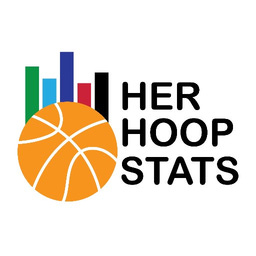Beware the Coming WNBA Cap Crunch
Explaining how the WNBA's new CBA and altered salary structure could change things significantly this offseason
Thanks for reading the Her Hoop Stats Newsletter. If you like our work, be sure to check out our stats site, our podcast, and our social media accounts on Twitter, Facebook, and Instagram. You can also buy Her Hoop Stats gear, such as laptop stickers, mugs, and shirts!
Haven’t subscribed to the Her Hoop Stats Newsletter yet?
Now that the 2020 WNBA season is complete, it felt like the right time to send out a warning to fans in regards to their teams' roster building for next season: It's not going to be as easy as it used to be.
Back in January before the world exploded, the WNBA and the Players' Association agreed to a new Collective Bargaining Agreement. After many, many years and multiple CBAs where very little change was made to the salary structure of the league, this one included some meaningful new elements. The primary changes that were important to this area are that individual player maximum salaries went from $115,000/$117,500 in 2019 under the old deal (for max/supermax contracts) to $185,000/$215,000 in 2020. Meanwhile, the overall team cap went from $996,100 in 2019 to $1,300,000 in 2020. So supermax contracts for players went up 83%, but the amount of room teams have to sign their whole roster only went up 31%. As a proportion of the team cap, supermax salaries went from 11.8% to 16.5%.
The ultimate result is that we should finally see some greater stratification in WNBA salaries. For a long time, the vast majority of the league was either still on their rookie-scale contract (which lasts four years after being drafted), or they were on a max or near-max contract. Around 40% of the league tended to be on the max or something close to it, and teams could carry at least six of those deals if the rest of their roster was filled out with rookie-scales and minimums. You can't do this anymore, which is why things are going to get interesting this offseason.
Let's take Phoenix as an example, because all their contracts are at extremes, which makes things simple. They have six players currently under contract for 2021:
Skylar Diggins-Smith - $221,450 (supermax)
Brittney Griner - $221,450 (supermax)
Bria Hartley - $190,550 (max)
Sophie Cunningham - $58,710 (minimum)
Alanna Smith - $58,710 (minimum)
Brianna Turner - $58,710 (minimum)
If we assume that Diana Taurasi returns for the supermax as well - which seems reasonable, unless she unexpectedly retires - that's another $221,450 to add on. That would take them to $1,031,030 for seven players. The 2021 team salary cap is $1,339,000, which means they'd have $307,970 remaining for four or five players (as WNBA rosters are required to contain either 11 or 12 players).
If the Mercury were to fill three of those spots with minimum contracts - and we're talking rock bottom 0-2 years of WNBA service minimums here ($58,710), not even veteran minimums ($70,040) or their #6 overall pick ($67,208) - they'd have $131,840 left for the final spot (or two) on their roster. That's without re-signing veterans Jessica Breland, Kia Vaughn, Shatori Walker-Kimbrough or Yvonne Turner. That number is less than Tiffany Mitchell, Shekinna Stricklen or Isabelle Harrison signed for last offseason.
You see, whereas you used to be able to sign your entire veteran core of at least six players for around the maximum and then fill out your roster, Phoenix's four max/supermax contracts would account for 64% of the team cap. That doesn't leave the same room to maneuver that teams used to have. Similar cap crunches are also potentially imminent for other teams with a lot of veteran free agents that they'd presumably like to retain, like Washington, Los Angeles, Connecticut and Seattle.
What this system ought to result in once teams adjust is that only true star players should receive the absolute top salaries. Then valued veterans should fall anywhere on the scale from minimum to maximum depending on performance, potential, leverage and how good their agent is. Alongside that, if teams with a lot of star power can no longer afford to pay everyone (and no one’s willing to take a discount), then talent should disperse more evenly around the league. However, teams are still adjusting to this new world order, hence Phoenix’s roster of extremes. Franchises are going to have to make some tough decisions, and some players are either going to have to accept less than they think they’re worth, or play somewhere else (or even not play at all).
Last offseason, there were enough players still on contracts from the old CBA system that everyone had cap room to burn and could do almost anything they wanted. This time around, a lot of those old deals have expired and those players will now be expecting to step up onto the new scale. The league theoretically has enough space for most of those free agents to receive about what you'd expect them to get - but only if everyone was willing to spread out around the league and every team willing to spend right up to the cap.
Those things historically haven't happened. So all I'm saying is be wary. Not all your favorites may be back in town next season, even if the teams are back playing in their home cities. It won't necessarily be because the team didn't want them or they didn't want to be there - it could simply be due to there only being so much money to go around.
Thanks for reading the Her Hoop Stats Newsletter. If you like our work, be sure to check out our stats site, our podcast, and our social media accounts on Twitter, Facebook, and Instagram.



